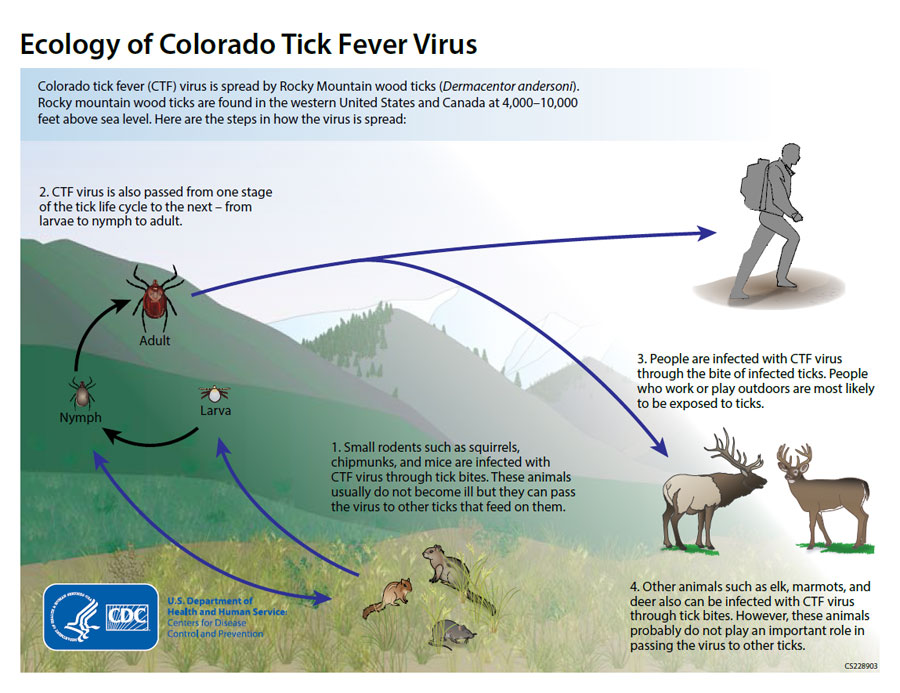Colorado tick fever pathophysiology
|
Colorado tick fever Microchapters |
|
Diagnosis |
|---|
|
Treatment |
|
Case Studies |
|
Colorado tick fever pathophysiology On the Web |
|
American Roentgen Ray Society Images of Colorado tick fever pathophysiology |
|
Risk calculators and risk factors for Colorado tick fever pathophysiology |
Overview
Transmission
- Infection with Colorado tick fever occurs as a result of being bitten by an infected Rocky Mountain wood tick (Dermacentor andersoni).
- Colorado tick fever is transmitted to a tick during a blood meal involving a rodent reservoir such as a squirrels, chipmunks, and mice.
- Infection perpetuates as a tick continues to feed on another host.
- Viral transmission from human to human is rare, however may occur during blood transfusion. [1]

References
- ↑ Centers for Disease and Control, Colorado tick fever transmission. http://www.cdc.gov/coloradotickfever/transmission.html Accessed January 20,2016